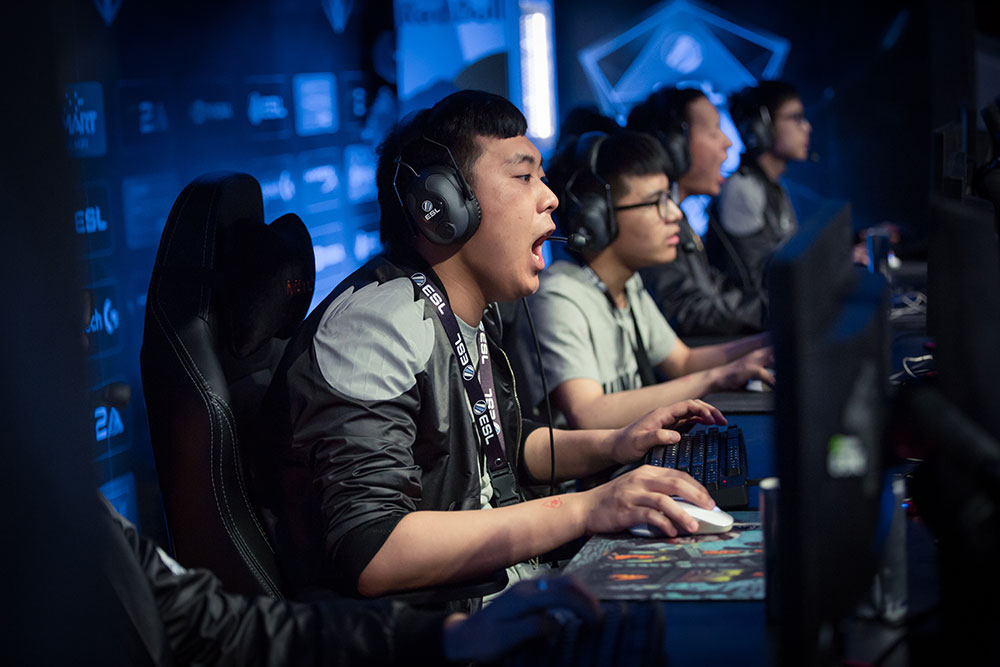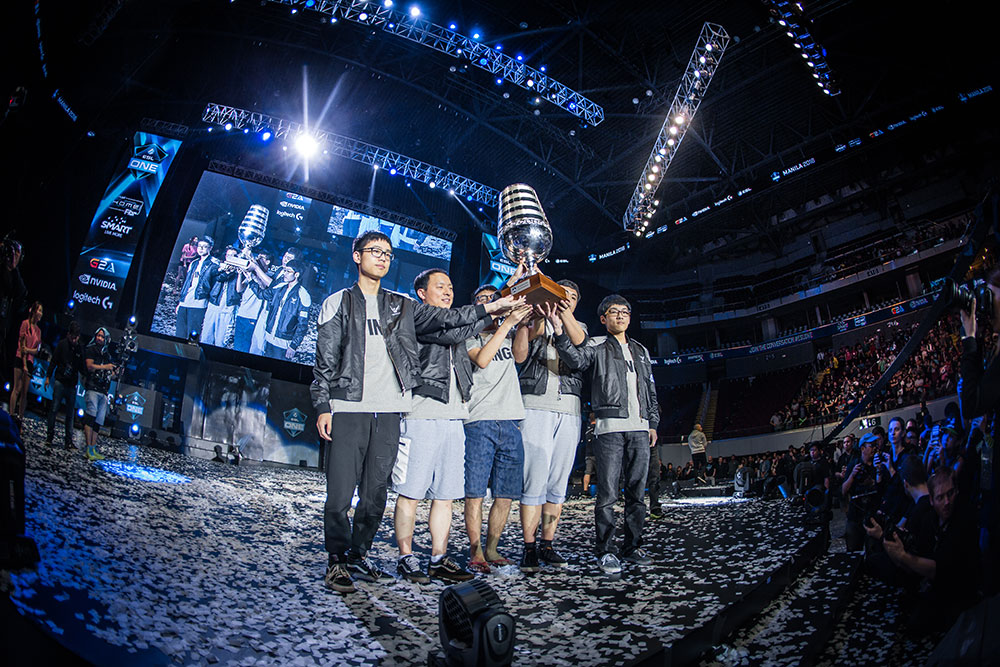
After more than 35 years of operation, TBI is closing its doors and our website will no longer be updated daily. Thank you for all of your support.
eSporting chance
 The biggest programme genre of future might come from an unusual source. Jesse Whittock speaks with the companies behind the eSports gaming revolution
The biggest programme genre of future might come from an unusual source. Jesse Whittock speaks with the companies behind the eSports gaming revolution
Something’s been happening in the bedrooms of millennials around the world, and the television world has finally noticed. While producers and broadcasters were attempting to harness the power of user-generated content from YouTube, the eSports industry was growing in parallel and will soon be a US$1 billion revenue business, according to research house Newzoo.
In the simplest terms, eSports as a viewing experience is streamed video of gamers playing against each other online, on platforms such as Twitch. At its biggest, eSports can fill huge venues with fans watching their favourite players compete in big-money tournaments, bringing all of the energy and tension of a major sports event.
“eSports has the same drama as any other live competition,” says Steven Roberts, executive chairman of ESL, one of the biggest eSports leagues. “A huge percentage consume it like how they would the Premier League or the NFL. There is an understanding of how millions play the games, and how the pros play the games.”
ESL houses professional players of games including Counter-Strike and Mortal Kombat in leagues and tournaments such as the Intel Extreme Masters, ESL One and League of Legends. Around twelve of its pro leagues are powerful enough to have accompanying big arena events, says Roberts.
“We recently had 120,000 people in Katowice, Poland, and the event received 100 million views on the internet,” he adds. “We’ve produced about 20,000 hours of live eSports content and have about five studios around the world.”
The numbers have made television and video companies sit up. In September last year, European broadcaster Modern Times Group bought ESL’s parent, Turtle Entertainment for €78 million (US$88.4 million), as part of strategy to repositon as a digital-first company.
 Arnd Benninghoff (right), CEO of MTG digital unit MTGx Ventures, says the eSports opportunity lies within the ability to monetise the content. “The intrinsic motivation, and I’m always careful when comparing this to traditional sports but it sometimes makes it easier, is you identify yourself with a team, and that could make you interested in products you can buy related to that team,” he says. “If you play a game like League of Legends you can customise your outfit, for example.”
Arnd Benninghoff (right), CEO of MTG digital unit MTGx Ventures, says the eSports opportunity lies within the ability to monetise the content. “The intrinsic motivation, and I’m always careful when comparing this to traditional sports but it sometimes makes it easier, is you identify yourself with a team, and that could make you interested in products you can buy related to that team,” he says. “If you play a game like League of Legends you can customise your outfit, for example.”
The issue for TV companies in is how to exploit the opportunity, but eSports firms are taking the iniative. ESL, for example, plans to take the product to linear platforms. It has partnered with Craig Piligian and Lionsgate Entertainment’s unscripted producer, Pilgrim Media Group, to create eSports content for TV and digital platforms.
“Lionsgate and Craig are great storytellers, and that opens up a whole new world of different types of people to us,” says Roberts. “We expect to get amazing stories from the Pilgrim Media Group in a way that hasn’t been done before in eSports.”
Roberts says that the professional players, who make most their money through sponsorship and revenue shares with video platforms such as Twitch, need prodcos like Pilgrim to shine a spotlight on their top personalities to take them to the next level. “Traditional sports in the US have shown that if you don’t have a storyline early on viewers are indifferent and you have disenfranchisement,” he says.
Endemol Shine Group’s digital unit, Endemol Shine Beyond, is taking a similar approach, but wants gaming video to go beyond catering for the fanboys and girls. Last October, the company launched eSports and online gaming digital channel Smasher, which features original programming such as Legends of Gaming, Rule’m Sports, Game Fame, We’re in the Game, Fantasy League, Pro v Pro and Smashed Up.
 “There are not many editorial gaming channels,” says Randel Bryan, Endemol Shine Beyond UK’s director of digital content and strategy. “You want to be authentic for the audience, but want to add scale and grandeur. The reason we’re doing that is to attract brand advertisers and media buyers.”
“There are not many editorial gaming channels,” says Randel Bryan, Endemol Shine Beyond UK’s director of digital content and strategy. “You want to be authentic for the audience, but want to add scale and grandeur. The reason we’re doing that is to attract brand advertisers and media buyers.”
He describes cult UK format Legends of Gaming as “more a showcase of gamers than eSports per se”, but says the basic tenets remain true, despite it mainly featuring amateur players.
“You can have as many likes online as you want, but unless people will transact and put their hands in their pockets you’ll have a limited destination,” says Bryan. As such, the Smasher content aims to add a layer of professional production eSports fans are not used to. “I don’t think people want to see weak production – [better content] has just not been offered to them,” says Bryan.
Endemol Shine Beyond currently focuses on bedrooms gamers and non-professionals and it primarily distributes its content on YouTube and owned-and-operated platform GetBeyond in the US.
Bryan says success for television companies will come with “huge scale” comprising “layers of user-generated content and [professional] production”. In the long-term, eSports content “is really about who can best replicate the conditions of [traditional] sports”, he adds.
Many are trying to do just that. Comcast is sponsoring ESL leagues, paying for naming rights in the same way businesses pay to name sports stadiums, while The CW has partnered with Machinima to launch web docuseries Chasing the Cup. It features the ESL Mortal Kombat X Pro League on its digital network, CW seed, and the main broadcast TV network.
Yahoo and YouTube have both launched alternative platforms to Amazon-owned Twitch, and Turner Broadcasting System has hooked up with WME-IMG to crate the ELeague. This will run content on Twitch, on TBS in the US, and on Turner International networks in 80 territories across the African, Asian and European continents.
“We’re looking at this content being watched by a very engaged audience,” says Lauren Foye, research analyst at UK-based Juniper Research. “We see comparisons between the eSports audience and the traditional TV audience. As we go forwards, more people will be watching the live content.”
Juniper’s research forecasts platforms such as Twitch will have a combined audience base of more than 310 million – more than comparable NFL American football audiences – and revenues of around US$1 billion by 2020. Other forecasters are equally bullish, with Newzoo predicting there will be 145 million ‘eSports enthusiasts’ worldwide by 2017.
Newzoo’s CEO, Peter Warman, has been quoted as saying this year “will be pivotal for esports. The initial buzz will settle down and the way forward on several key factors, such as regulation, content rights and involvement of traditional media, will become more clear”.
How TV companies will fit into the emerging ecosystem isn’t yet known, but as Foye says: “Broadcasters can monetise this content.”



